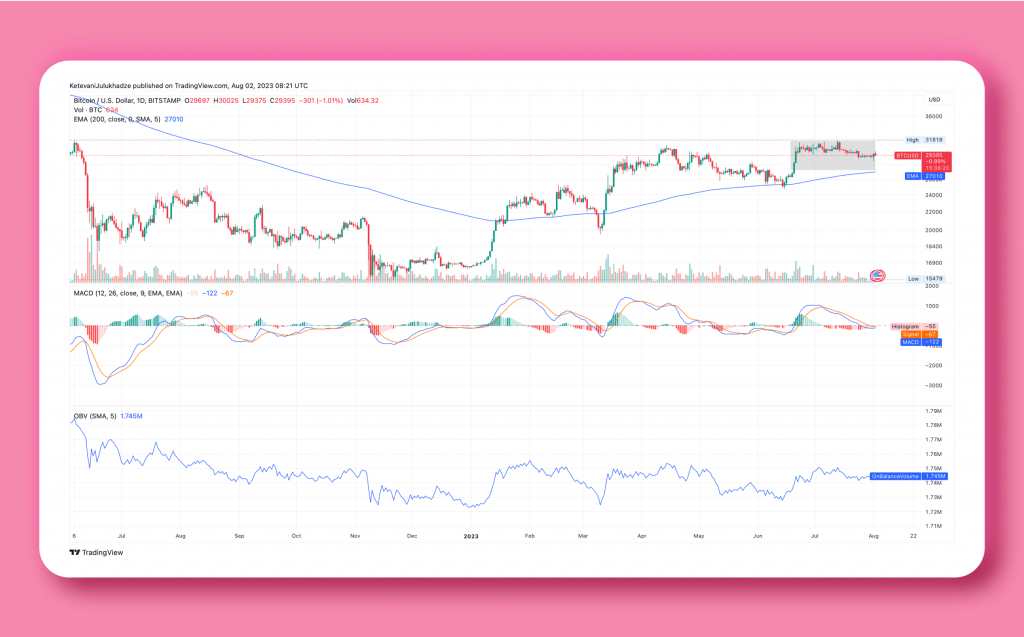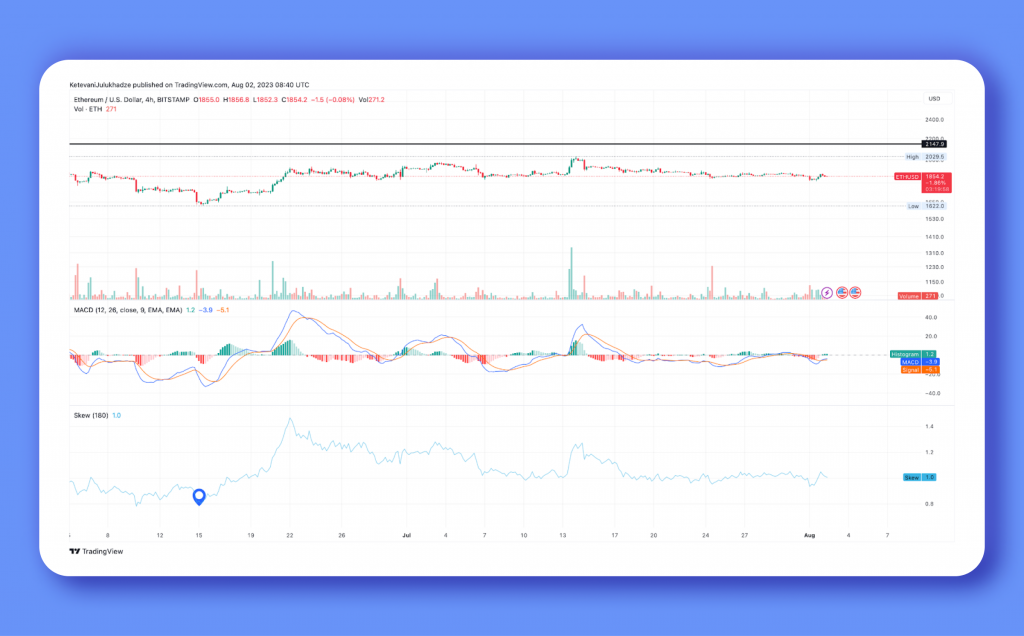From Bitcoin to Ethereum: Financial Giants Vie for Ethereum Futures ETF Licences
In June, the largest cryptocurrency was trading just above $25,500, responding to Blackrock’s announcement of a spot BTC ETF filling. This news triggered a swift market reaction. The Moving Average Convergence Divergence (MACD) indicator showed that these events attracted more investors to enter the market and take long positions in BTC.

The On-Balance-Volume (OBV) indicator indicated a higher inflow of volume than the outflow volume. This suggested that investors and traders were correct in their belief that the market would continue to recover and narrow the gap towards $28,000.
Despite the price increase above $25,500, the technical market structure was not robust enough. Consequently, Bitcoin approached its critical support line at $31,800. Therefore, Bitcoin remains within the range of $28,000 USD to $30,000 USD.
Prediction Of Upcoming Events Regarding Ethereum
The mid-June 2023 applications for spot Bitcoin ETFs submitted by prominent financial giants like BlackRock generated significant optimism within the crypto community. However, the excitement has now extended beyond Bitcoin, as some of these financial giants are focusing on applying for Ethereum futures ETFs.
Notably, six major companies, including Volatility Shares, Bitwise, Roundhill, VanEck, Proshares, and Grayscale, have filed applications for Ethereum futures ETFs. The news was reported on August 1st by Eric Balchunas, a senior ETF analyst at Bloomberg. This move indicates a growing interest in Ethereum as a valuable asset and reflects the increasing demand for diversified investment options in cryptocurrency.
On July 28, Volatility Shares submitted an SEC filing proposing the Ether Strategy ETF. This ETF would invest in cash-settled Ether Futures contracts traded on the CME rather than directly in Ether.
Following the successful launch of the 2x Bitcoin Strategy ETF (BITX), the first leveraged Bitcoin futures ETF in the country, Volatility Shares filed a new application. The new filing aims to correspond to two times the daily excess return of the S&P CME Bitcoin Futures Daily Roll Index. Analysts noted that despite recent Ether filers withdrawing their applications, Volatility Shares seem confident in the timing for their proposed ETF.
Analysis Of Ethereum Daily chart: Price Up by 2%, Does the Market Show a Different story?
Earlier this week, Ethereum (ETH) faced some selling pressure, causing its price to dip below $1,900, following Bitcoin’s drop to $29,000. However, in the last 24 hours, there has been hope as ETH managed to gain over 2%, and its current price stands at $1,850 with a market cap of $225 billion.
Despite the recent events, Ethereum options data suggest a negative bias for the ETH price over the next six months. The violently skew indicator for Ether, which measures the difference between implied volatilities of call and put options expiring in 180 days, has reached -1.0, marking its lowest point since June 15, according to Tradingview.

The negative value indicates a preference for put options, which give the buyer the right (but not the obligation) to sell the underlying asset at a set price on or before a certain date. Put buyers are bearish on the market, whereas call buyers are bullish.



